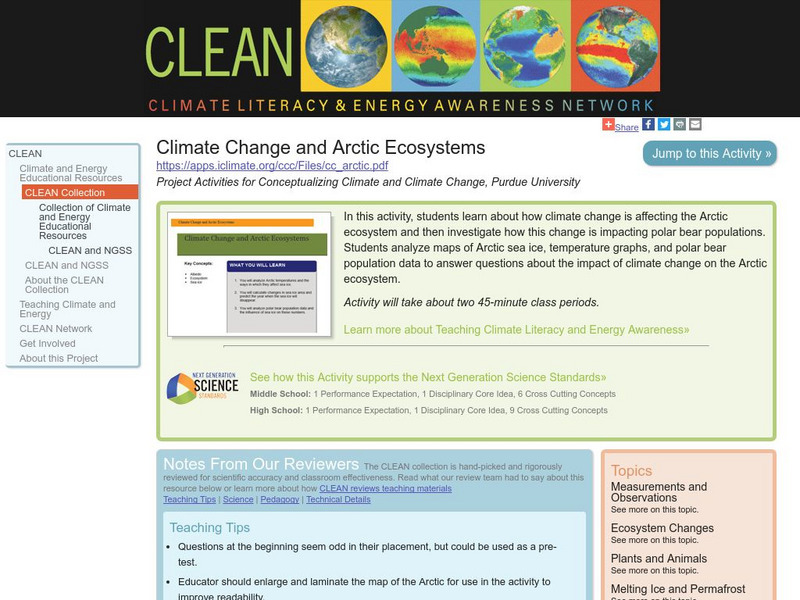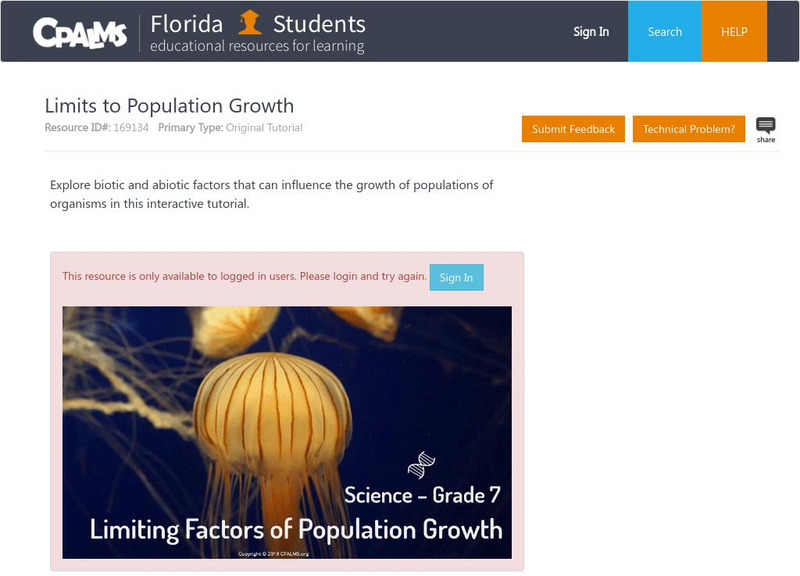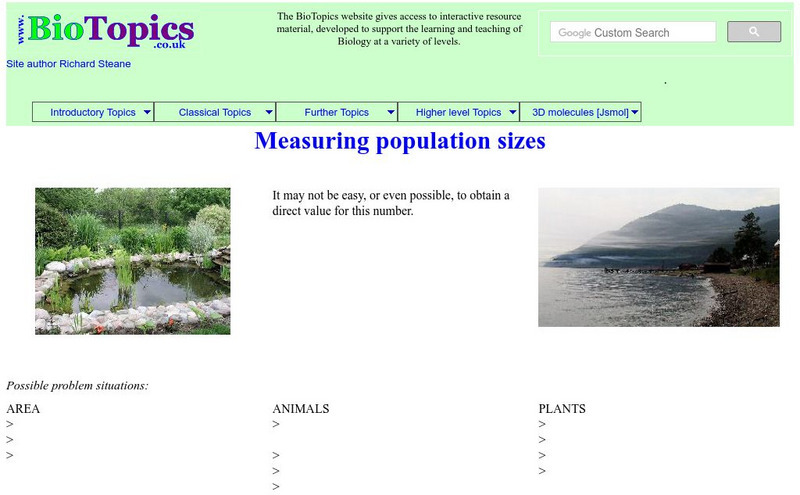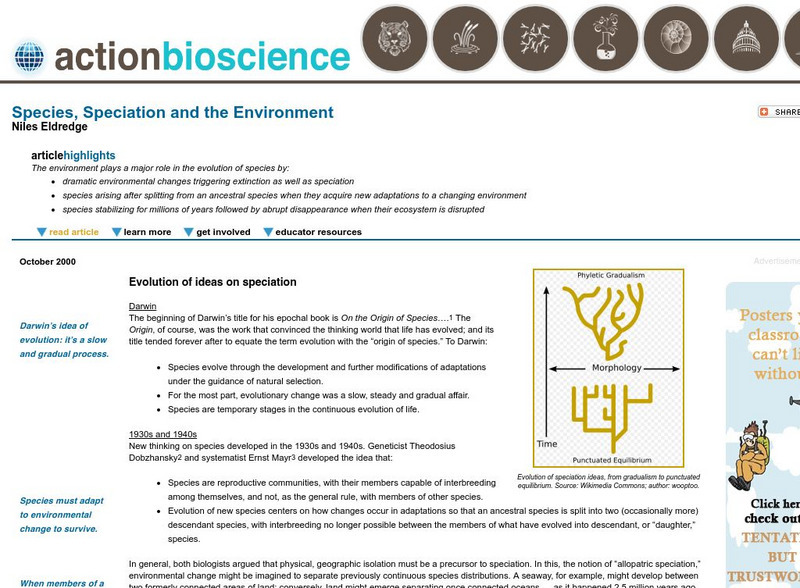Hi, what do you want to do?
National Geographic
National Geographic: Oil and Bird Populations
After learning about the diversity of wildlife in the Gulf of Mexico, students focus on birds and their patterns of behavior. They then how an oil spill might affect migrating birds, and possible ways to help them in the event of an oil...
PBS
Pbs: River Rewilding: Grand River Restoration and Revitalization Project
A unit for students to look at the economic opportunities associated with a river. Students will explore the Grand River Revitalization & Restoration Project. In this unit, they will also learn about two species impacted by the...
Polk Brothers Foundation Center for Urban Education at DePaul University
De Paul University: Center for Urban Education: Changing the Ecosystem: Q & a [Pdf]
"Changing the Ecosystem: Q & A" is a one page, nonfiction, reading passage about how the loss of the prairie to farming and population growth impacts the ecosystem. It is followed by questions which require students to provide...
Scholastic
Scholastic: Study Jams! Science: Ecosystems: Population Growth
Population in areas is most often determined by environmental factors. This video and the test will help ensure understanding of the trends of population growth with scientific evidence.
Climate Literacy
Clean: Climate Change and Arctic Ecosystems
Young scholars learn about how climate change is affecting the Arctic ecosystem, and then investigate how this change is impacting polar bear populations. Students analyze maps of Arctic sea ice, temperature graphs, and polar bear...
Concord Consortium
Concord Consortium: Dam Removing: Changes in the Environment Affect Population
What happens to a population when the environment changes? Students remove a dam that divides an ecosystem to illustrate the effects of environmental changes. Students observe and collect data as the grass and then the rabbit populations...
PBS
Pbs Teachers: Alien Invasion: Estimating a Snake Population [Pdf]
Learn about the effects of alien species on native environments and explore biologists' use of capture/recapture statistics and analysis of sampling techniques by estimating the population size of a tagged species.
Other
My Science Box: Ecosystem Organization
In this lesson, learners will learn about the different levels in the hierarchy of ecology and explain the relationships: organism, population, community, ecosystem, biome, and biosphere. They will also discover why different regions...
Texas Instruments
Texas Instruments: Glencoe Middle School Science: Biodiversity and Ecosystems
Students will conduct a field investigation to learn about the environment. They will observe biotic and abiotic factors of an ecosystem. Students can use the CBL 2 and a temperature probe to collect data and a graphing calculator to...
SMART Technologies
Smart: Energy Flow in an Ecosystem
Students learn about Abiotic and Biotic Factors and how they affect the ecosystem in which an animal might live in.
CPALMS
Florida State University Cpalms: Florida Students: Limits to Population Growth
Explore biotic and abiotic factors that can influence the growth of populations of organisms in this interactive tutorial.
Bio Topics
Bio Topics: Measuring Population Sizes
Read and understand the concept of ecological population counts and sizes. Hover the mouse over questions to reveal the answers as you sharpen your skills.
American Institute of Biological Sciences
Action Bioscience: Species, Speciation and the Environment
The American Institute of Biological Sciences offers this article by Niles Eldredge, evolutionary theorist and curator at the American Museum of Natural History. Eldredge begins with Darwin's theories and summarizes subsequent thought,...
Population Connection
Population Connection: Population and Environment[pdf]
A paper from the Population Connection that outlines the consequences to the environment if humans continue on the path of overpopulation.
TeachEngineering
Teach Engineering: Population Density: How Much Space Do You Have?
Students learn about population density within environments and ecosystems. They determine the density of a population and think about why population density and distribution information is useful to engineers for city planning and...
Cosmo Learning
Cosmo Learning: Principles of Evolution, Ecology and Behavior
A collection of video lectures introducing beginning biology students to the principles of evolution, ecology, and behavior. The course was taught three times a week for a semester at Yale University. The course discusses concepts of...
Utah Education Network
Uen: Human Settlement and Geography
Learn why people live in places with lots of people.
Concord Consortium
Concord Consortium: Evolution: Natural Selection
The concept of interdependence in an ecosystem and its effect on the evolution of populations is further explored through a model of a dam. Students build a dam in the middle of the field, dividing the ecosystem in half to illustrate the...
Concord Consortium
Concord Consortium: Dam Building: How Changes in Environment Affect Population
In this simulation, students build a dam in the middle of a field, dividing an ecosystem in half to illustrate the effects of environmental changes. They watch and collect data as the grass and then the rabbit populations in that region...
Other
Western North Carolina Vitality Index: Ecosystem Threats
The forests of Western North Carolina are threatened by a wide variety of environmental stressors and disturbances, such as insects, disease, invasive species, drought, fire, hurricanes, tornadoes, and ice storms. A stressor is any kind...
University of California
University of California Berkeley: Ecosystem Equilibrium
A simulator reviewing over the concepts of ecosystem equilibrium.
Utah STEM Foundation
Utah Stem Action Center: Great Salt Lake Ecosystem
This lesson plan provides an eight-day flow of educational activities in which learners use the Great Salt Lake ecosystem to explore food webs and how changes in living and nonliving factors affect different populations.
American Geosciences Institute
American Geosciences Institute: Earth Science Week: Sea Level and the Terrapin
Students build a model ecosystem to simulate the life and limiting factors of the Terrapin turtle.
CK-12 Foundation
Ck 12: Earth Science: Agriculture and Human Population Growth Study Guide
[Free Registration/Login may be required to access all resource tools.] Summarizes the key points about the evolution of agriculture and how it has impacted human population growth. Includes a few questions to check for understanding.










![Pbs Teachers: Alien Invasion: Estimating a Snake Population [Pdf] Activity Pbs Teachers: Alien Invasion: Estimating a Snake Population [Pdf] Activity](https://content.lessonplanet.com/knovation/original/42719-3ab379f516ca5265608d3b9539483f02.jpg?1661419221)









